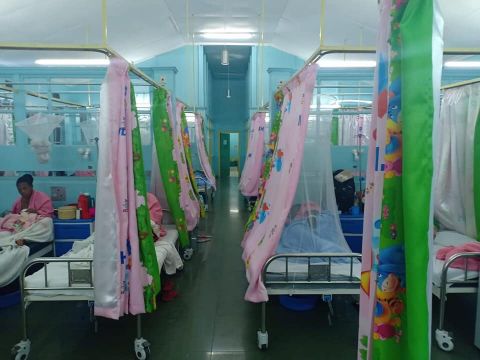Thousands of children in Nairobi are born with prior exposure to a chemical that causes reduced intelligence for life, tests by researchers from Kenya and the US indicate.
Mothers at Pumwani Maternity Hospital, whose blood was tested by the Government Chemist, had high levels of lead metal in their blood and also in the umbilical blood.
If a pregnant woman is exposed to lead, the chemical goes into her blood and can easily cross the placenta to the foetus.
According to the World Health Organization (WHO), the human foetus is the most vulnerable, and a pregnant woman can transfer lead that has accumulated in her body to her developing child.
Lead is also transferred through breast milk when lead is present in a nursing mother.
The researchers from the University of Nairobi and the University of Washington recruited mothers from Dandora and Kariobangi estates, who delivered at Pumwani Hospital, for the study.
Dandora is home to Nairobi’s main dumpsite, where past studies have shown heavy contamination with lead. Kariobangi is clustered with cottage industries, including informal lead acid battery recycling.
The mothers agreed to donate some of their blood and samples from the umbilical cord.
The blood was then tested at the Government Chemist in Nairobi.
“Twenty-three per cent and 100 per cent respectively, of the [umbilical] cord and maternal blood lead levels exceeded the US Centres for Disease Control and Prevention’s blood lead reference value,” the authors said.
The researchers are Edith Lumumba, John Onyatta and Faridah Were of the Department of Chemistry at the University of Nairobi.
The others are Anne Riederer, Sarah Benki-Nugent, and Catherine Karr of the University of Washington.
They noted no amount of lead exposure is safe, especially for newborns because it can cause mental retardation for life. Such children are especially poor at mathematics.
“These high lead levels are concerning, considering the neurodevelopmental effects associated with even very low levels of blood lead levels,” the authors said in a paper published in the Environmental Health Perspectives journal on Wednesday.
The paper is titled ‘Maternal and Umbilical Cord Blood Lead Levels in Selected Informal Settlements in Nairobi, Kenya: A Cross-Sectional Study’.
Although the tests were done in 2020-2021, this is the first study to report umbilical cord blood lead levels in Nairobi.
Evidence of reduced intelligence caused by childhood exposure to lead has prompted the WHO to list “lead-caused mental retardation” as a recognised disease.
Childhood lead poisoning can also lead to lifelong learning disabilities, anaemia and disorders in coordination, visual, spatial and language skills, according to WHO.
The researchers said most of the lead poisoning appeared to have come from house paints.
Manufacturers illegally add the chemical to make paints dry faster and for the finish to appear shinier.
Kenya banned the chemical as a paint additive in 2018 but various studies confirm some rogue paint makers still use it in their products.
It enters the body primarily through inhalation and ingestion of lead-containing dust.
It then travels in the blood to soft tissues such as the brain, liver, kidneys, lungs, muscles, and heart.
Lead enters the brain by disguising itself as calcium, an element that is essential for brain growth.
Once in the brain, it blocks the uptake of calcium, causing some cells to be damaged, scientists say.
The researchers in the current study linked their findings to a slow phase-out of lead-based paints in Kenya.
“The implementation process is quite slow, particularly in the informal settlements with poor housing conditions,” they said.
Their study showed that mothers who lived in a painted house were more likely to have lead in their maternal and cord blood.
Those in houses with peeling or chipping paint had a higher likelihood of exposure.
“Persistent lead exposure may occur during sweeping and dusting in houses painted with lead-based paints,” they said.
The authors recommended that Kenya improve its screening and surveillance for illegal lead-based paints and fuel and also educate the public about the dangers of lead.
“Kenya and other lower and middle-income countries should consider implementing established strategies to reverse the increasing global disparity in lead exposure,” they said.
The Kenya Bureau of Standards (KEBS) has developed and adopted two standards for paints, varnishes and related products to control the manufacture and importation of leaded paints.
These standards limit the permissible total lead concentration of paint to 90 Parts per million (ppm), the levels generally recommended by the United Nations.











